How to Perform Antidromic Stimulation
Antidromic stimulation is performed to determine if a neuron that you are recording from projects to a particular region of the nervous system. You stimulate the axon of the neuron, and an action potential propagates backwards (antidromically) to the cell body, where recordings are occurring.
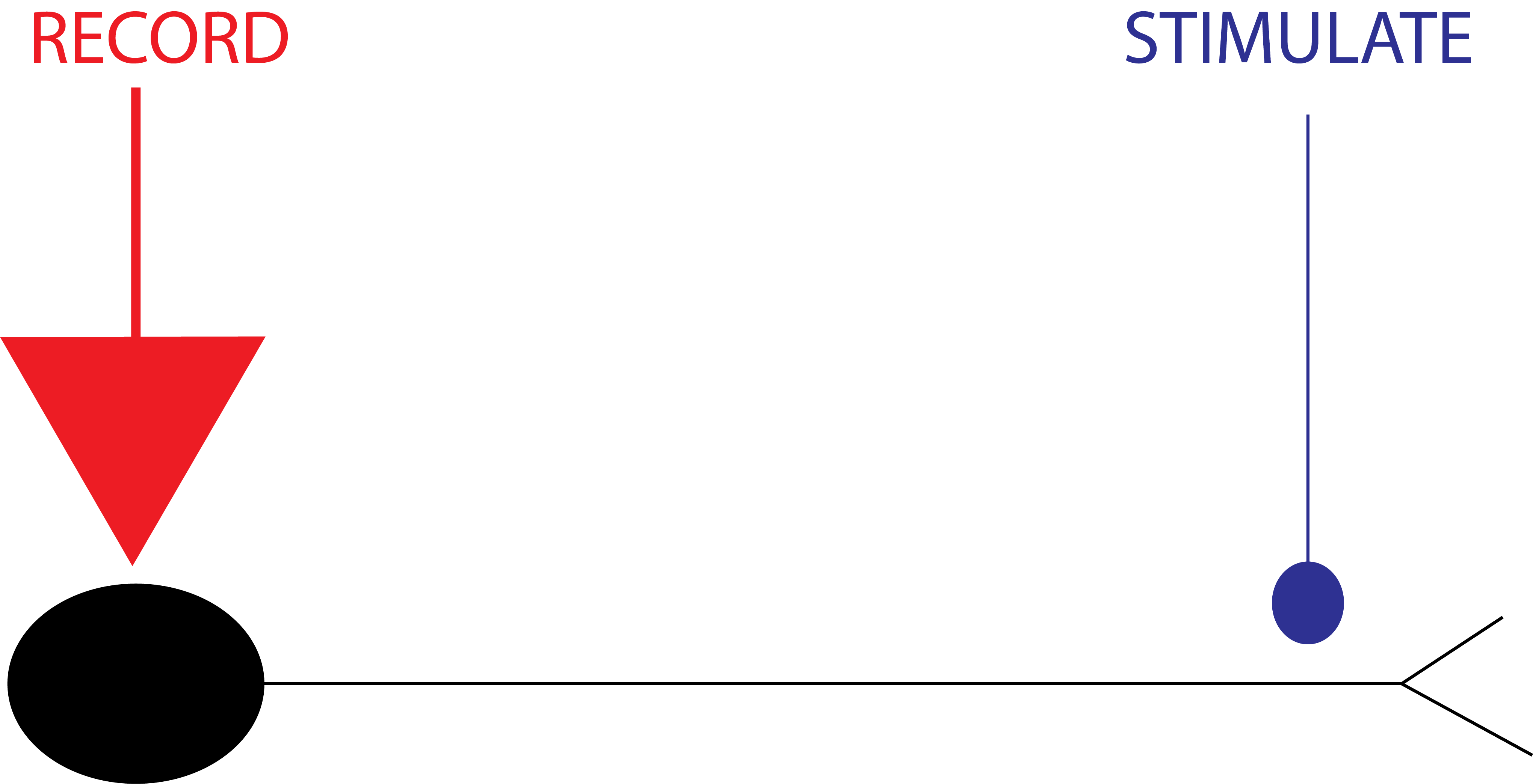
A confound is that stimulation can also activate neurons that project to cells of interest, which can cause the cell recorded to generate an action potential after every stimulus. This is called "orthodromic activation".
To differentiate between antidromic and orthodromic activation, the collision test is performed. Just after a neuron has a spontaneous action potential, it becomes refractory to antidromic activation. Thus, if a stimulus is delivered just after the spontaneous action potential, no antidromic action potential is observed (see examples below).
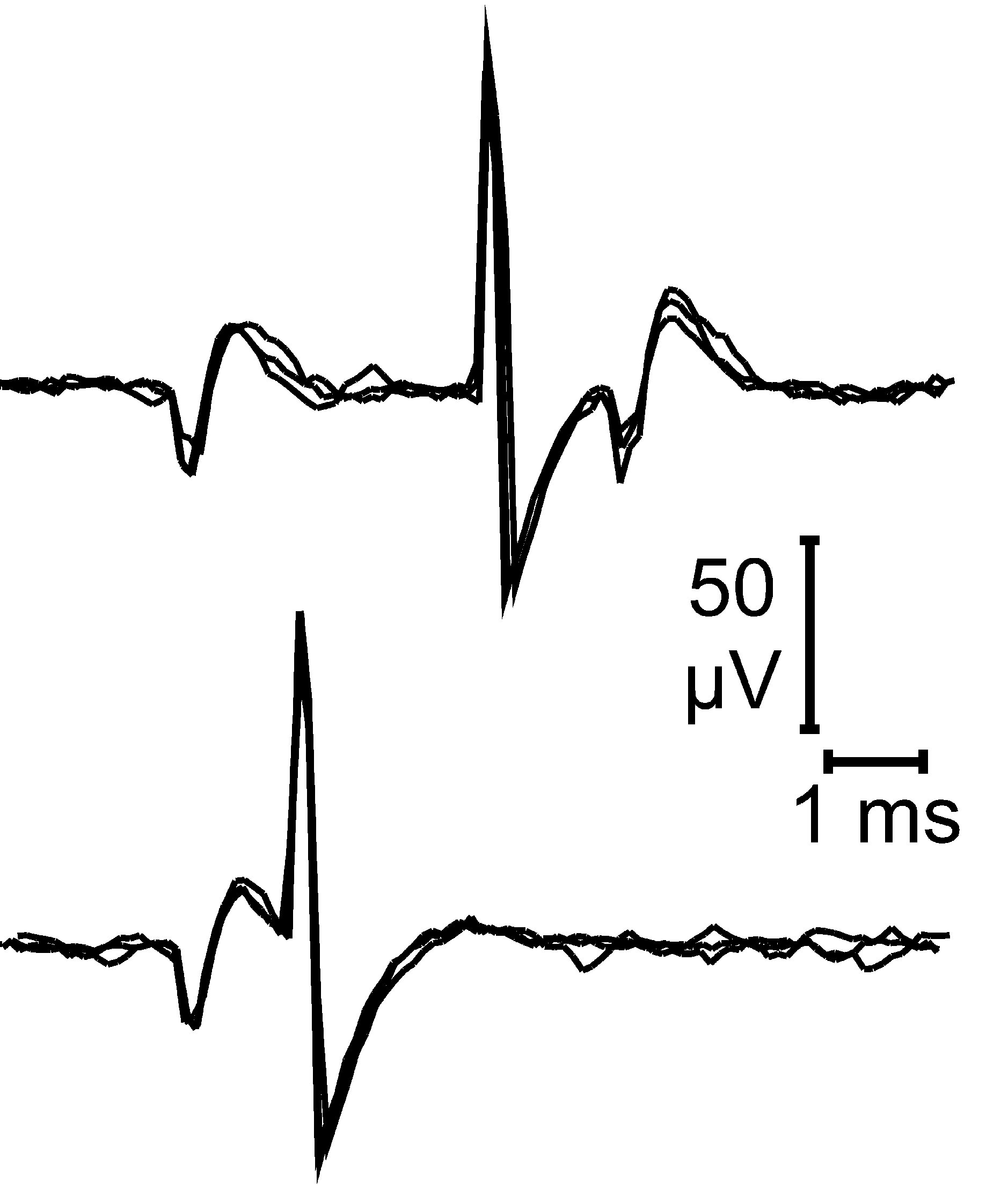
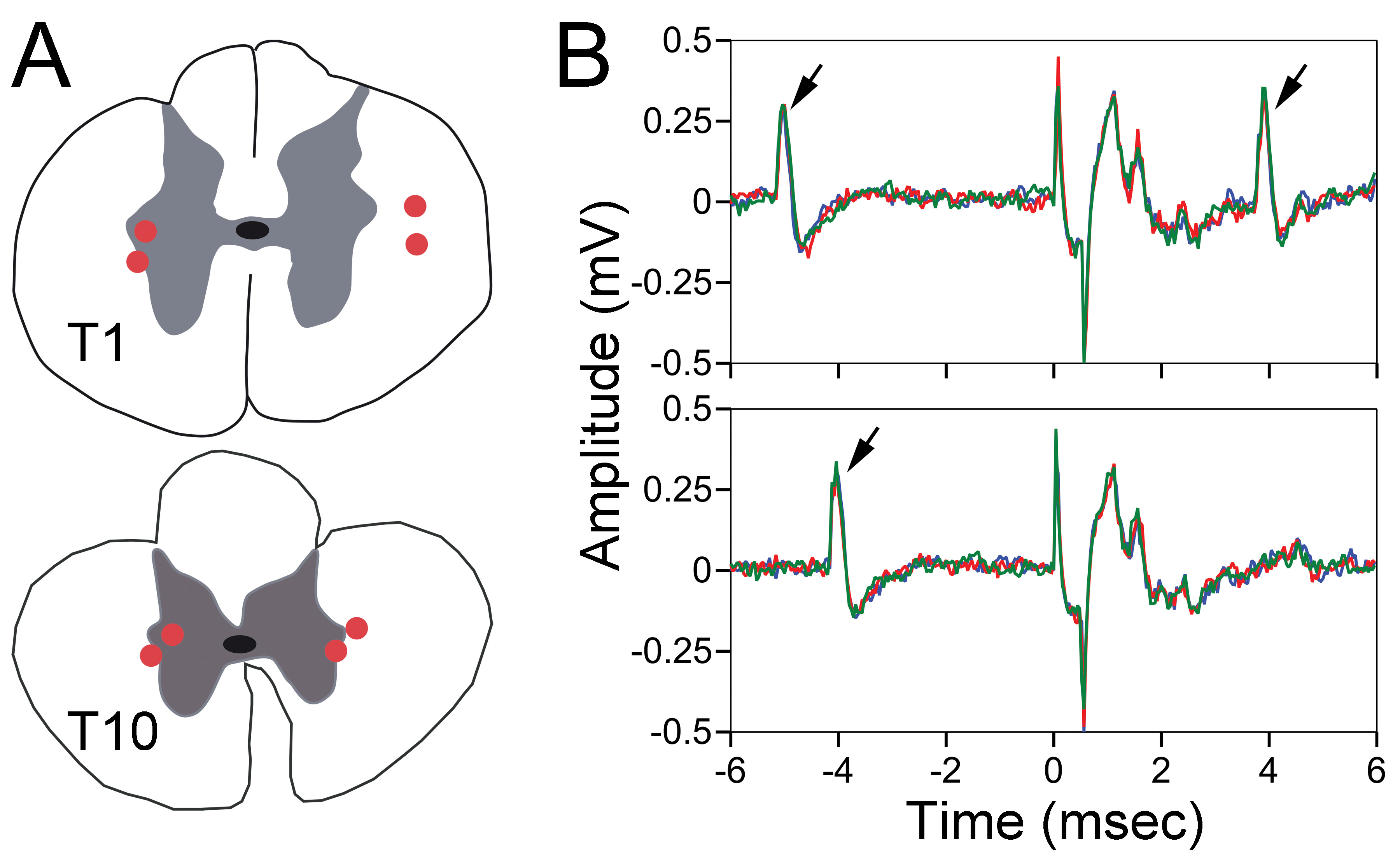
A Technical Guide to Antidromic Stimulation
In our experiments, small electrodes will be inserted into the spinal cord. The connectors are attached to a switch box, that is mounted on the tilt table. This box allows you to pass the current through each electrode in turn. The return path for the current (anode) is a wire attached to muscle.

To perform antidromic stimulation, it is essential to trigger the Tektronix oscilloscope off the trigger pulses from the stimulator. To do so, a change needs to be made on the patch panel. The "Gould Trigger" switch needs to be moved from "Window Pulse 1" to "AM Trig".
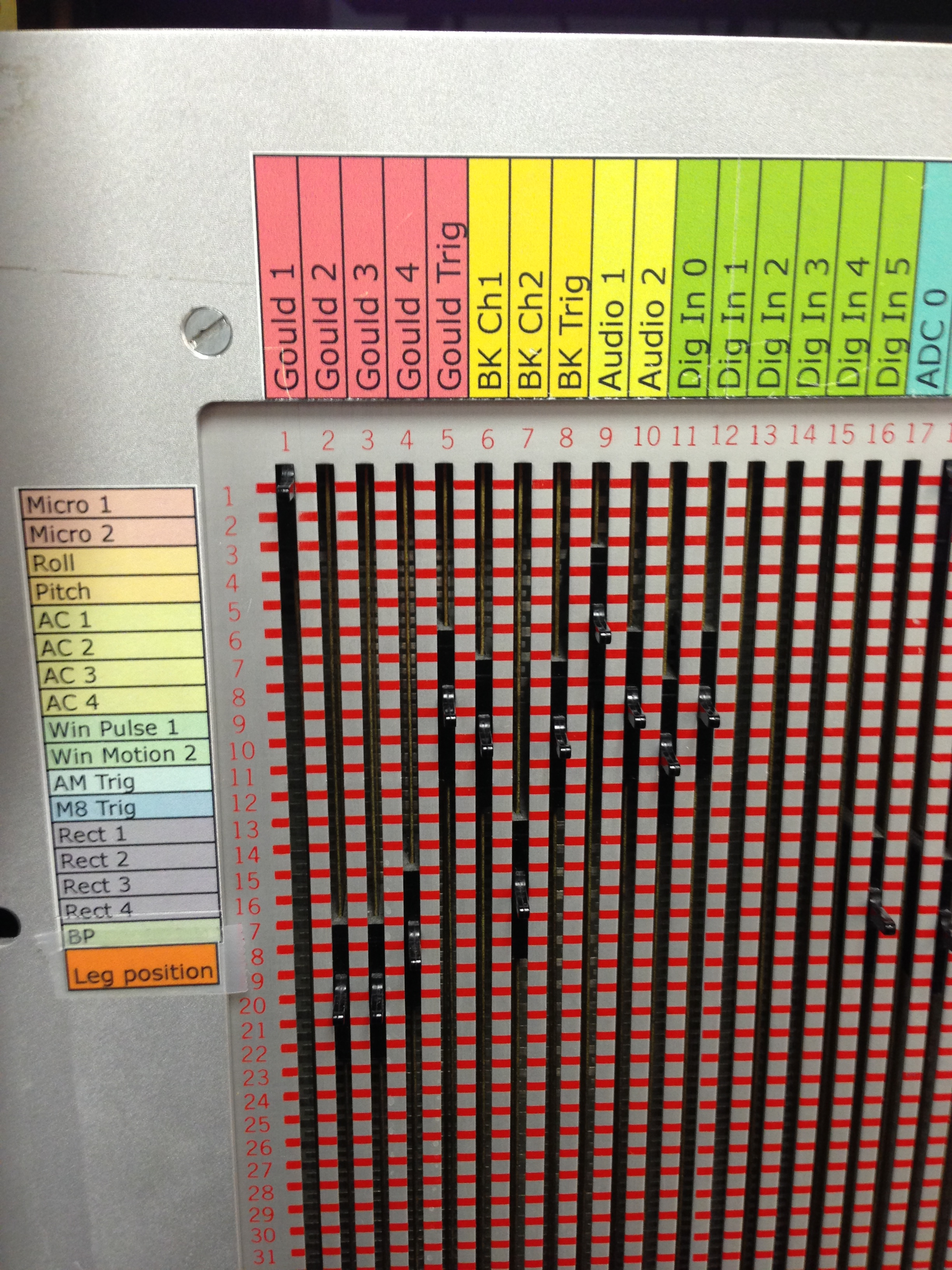
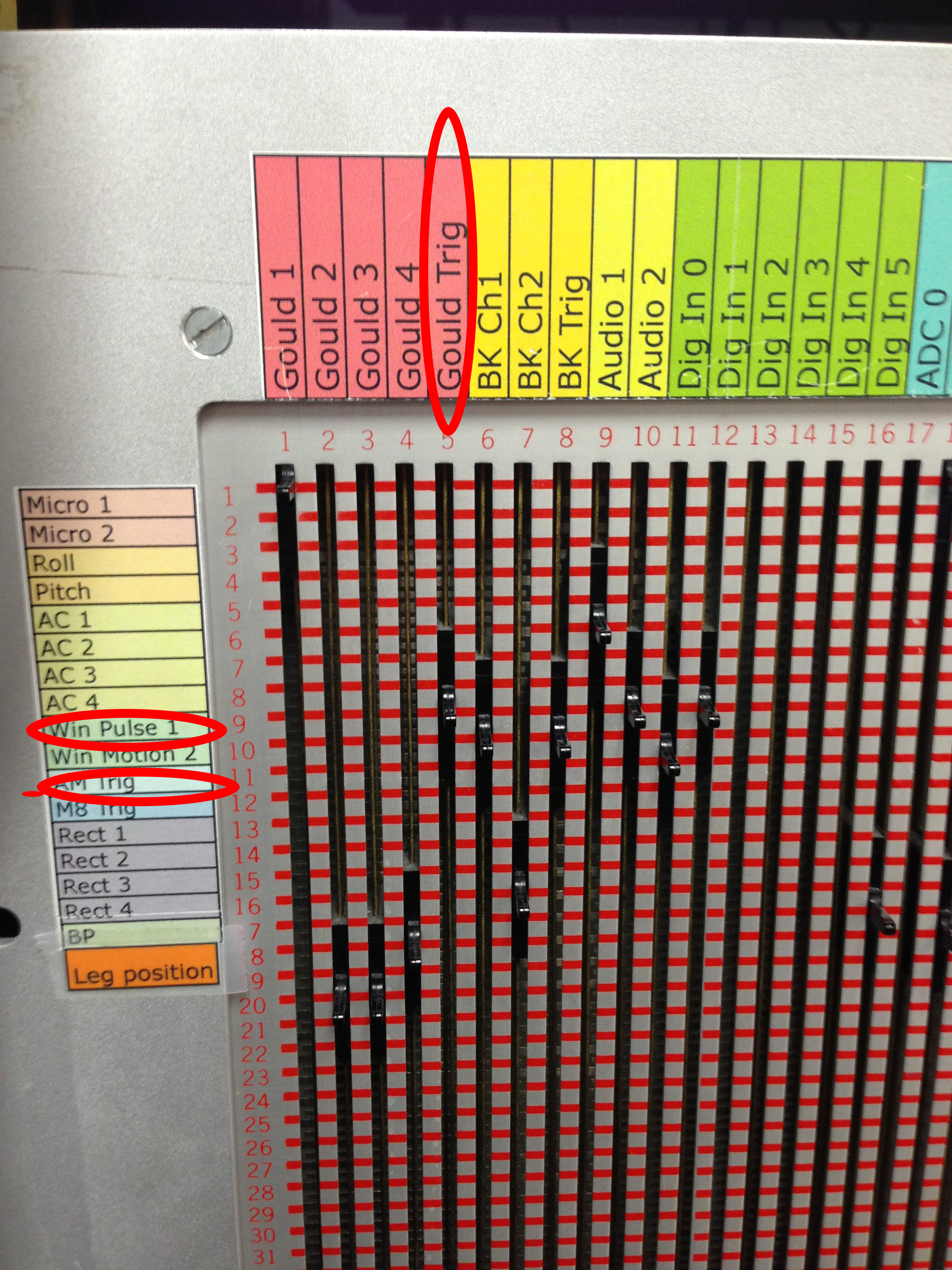
Stimulation is provided by the AM-systems isolated pulse stimulator, located in the rack just below the microelectrode amplifier.
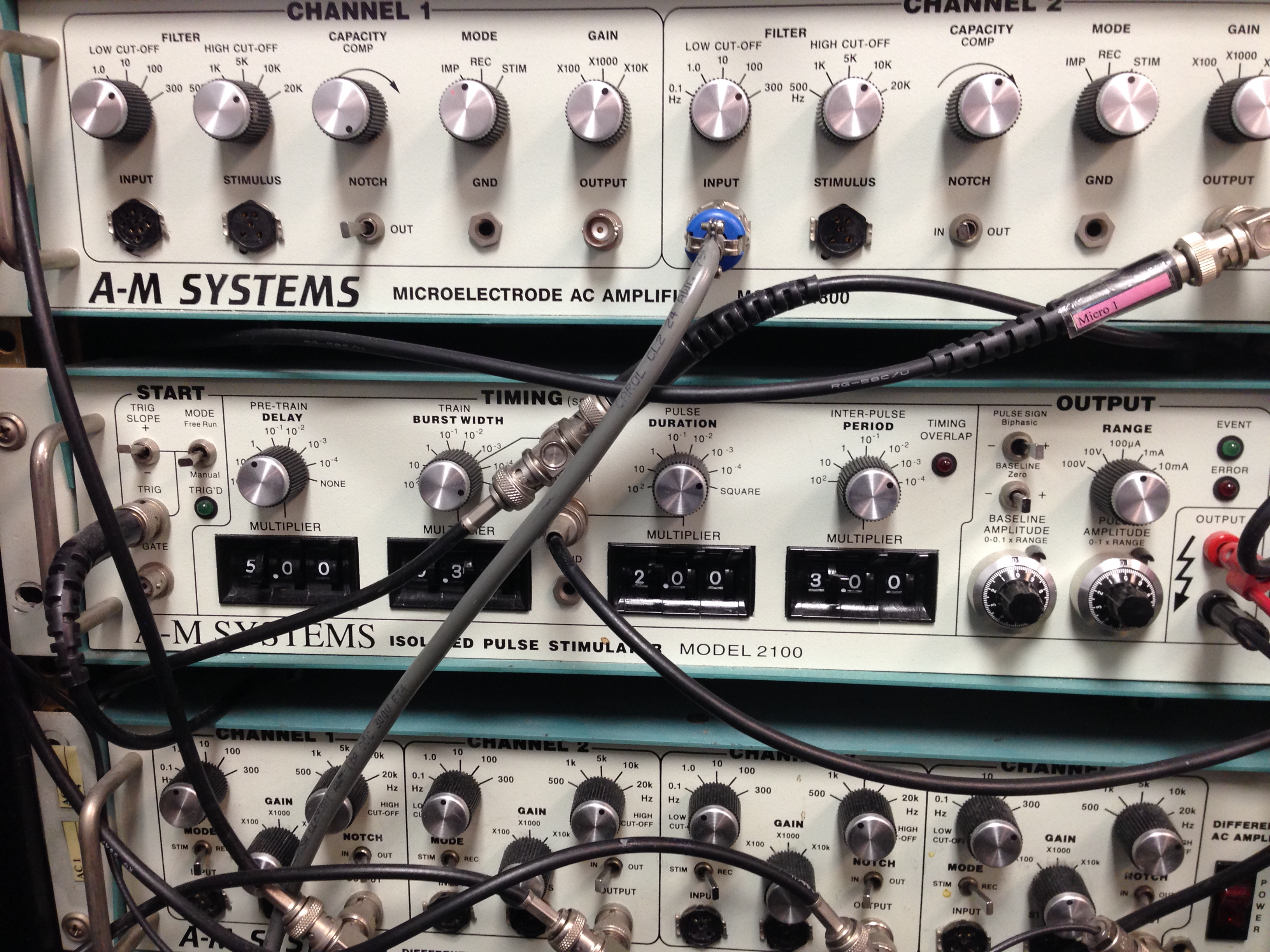
There are two modes of operation for the oscilloscope: free run and triggered. These are set in the start panel. In free run mode, the stimulator provides current pulses at the interval set in the timing panel. In triggered mode, the stimulator provides current pulses after the neuron fires. The stimulator knows when this occurs, as it receives trigger pulses from the window discriminator. The collision test is done when the stimulator is in triggered mode.
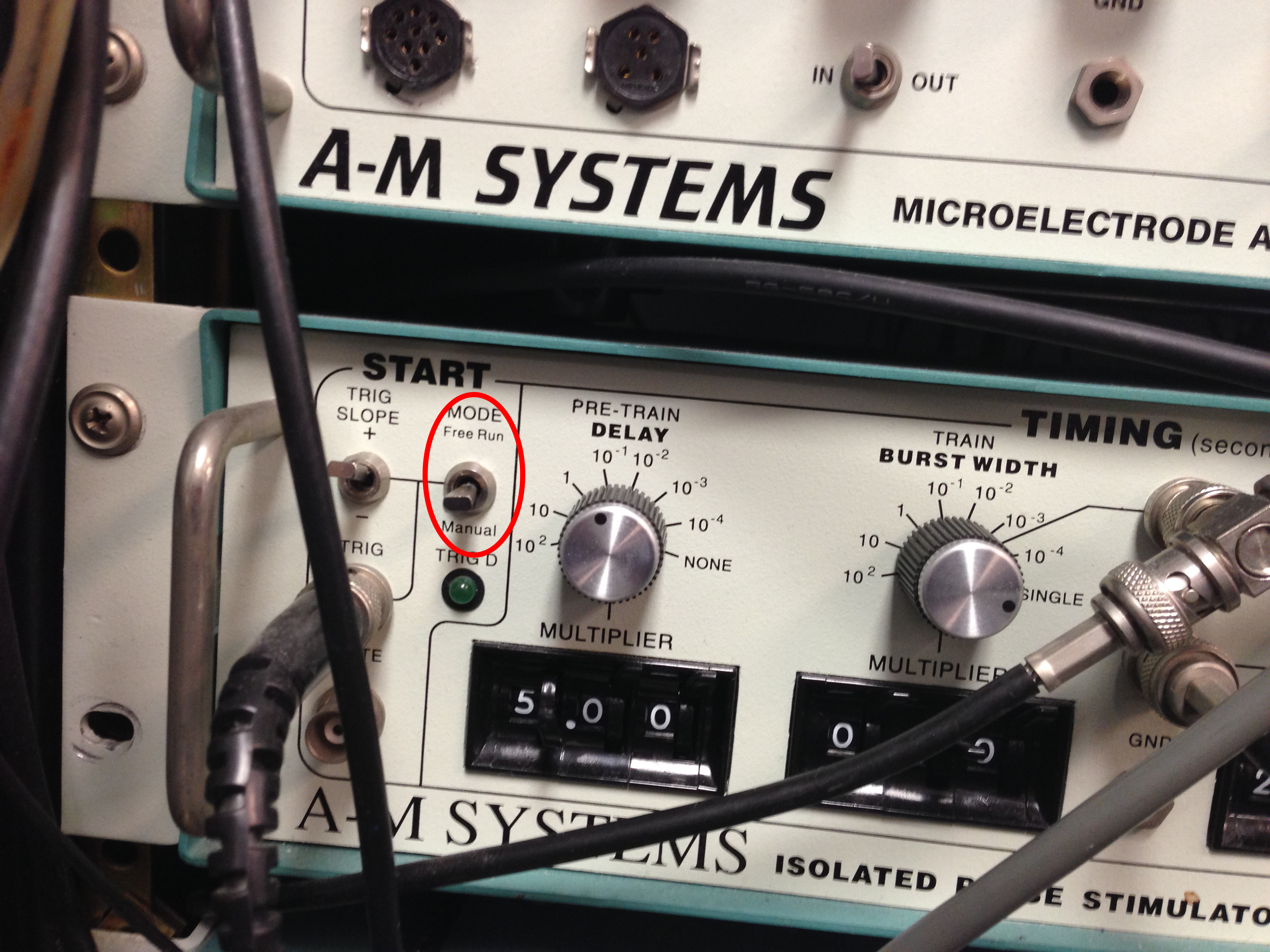
The output panel sets the amplitude of the current pulses. The top "range" switch specifies the maximal current delivered when the potentiometer below it is turned up all the way. The bottom potentiator sets the current delivered within that range.
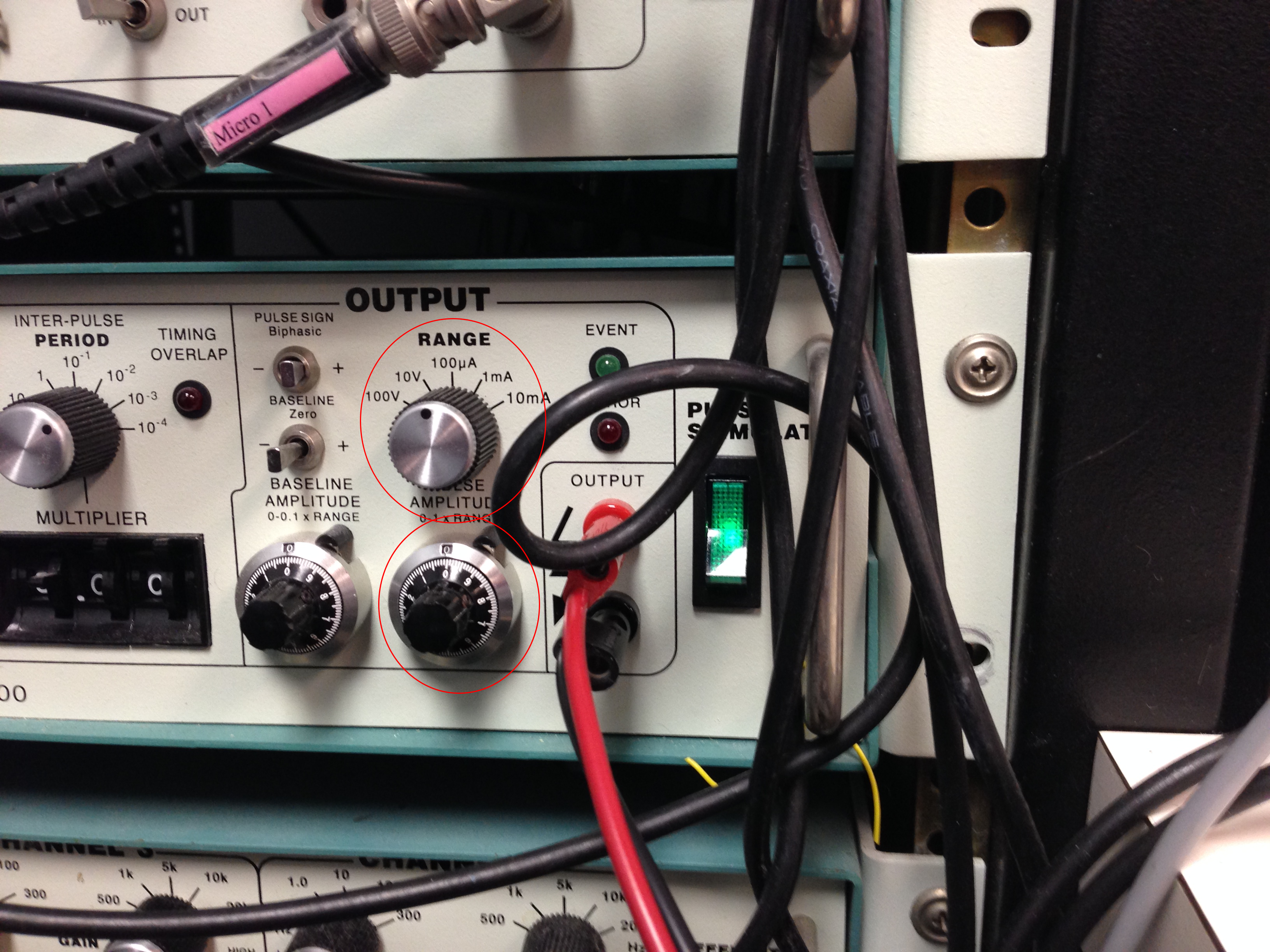
The timing controls are not usually manipulated, except when doing the collision test. The pre-train delay is usually set to 0.5 sec when the stimulator is in free run mode. When in triggered mode (collision test), the interval must be shortened to determine if collision occurs. Note that the collision interval is about the same as the latency of the antidromic response. For example, if stimulation in free run mode generates an action potential with a latency of 3 msec, then the pre-trigger delay would have to be shortened less than 3 msec for collision to occur.

To capture antidromic data in the computer, load the "Anti" configuration.
The data recorder must indicate the effective stimulation parameters in the notebook. An example is below:
Electrode 1 --> T=45 ľA
Electrode 2 --> No response at 400 ľA
Electrode 3 --> T=300 ľA
Electrode 4 --> No response at 500 ľA